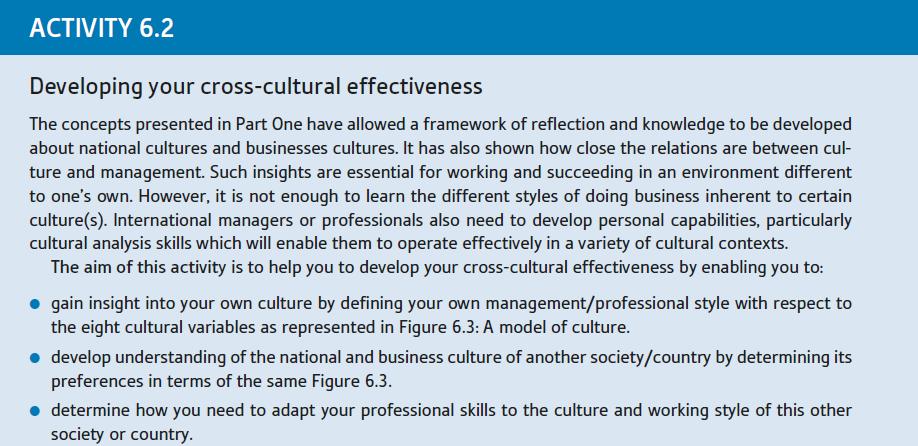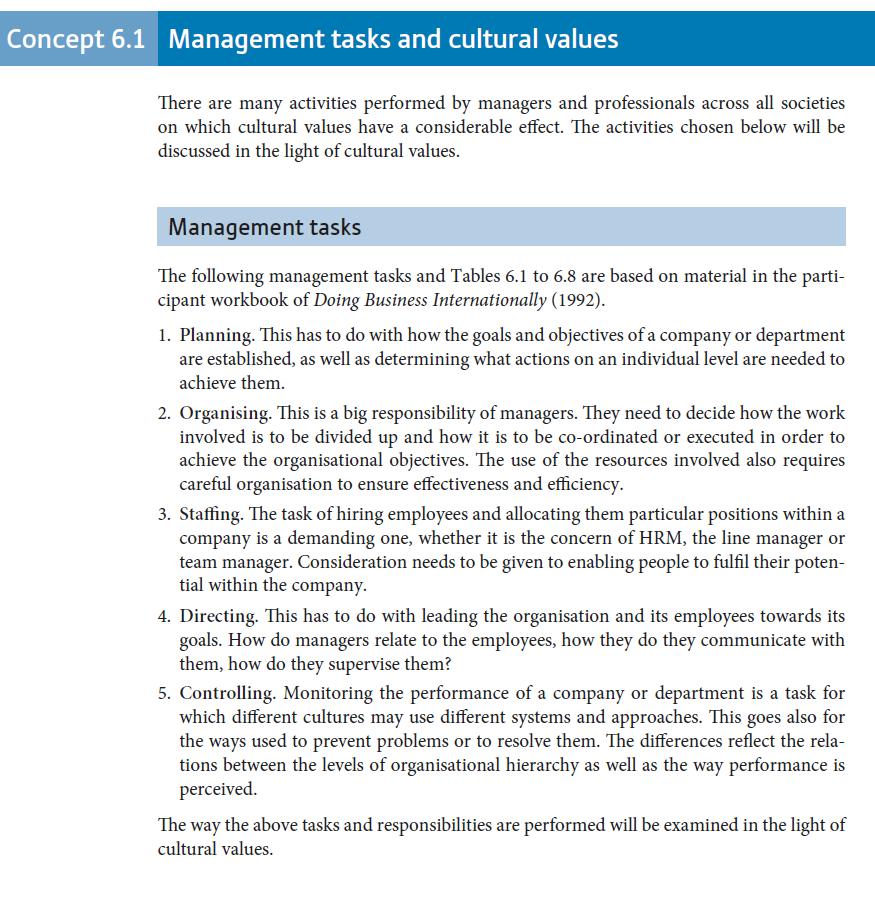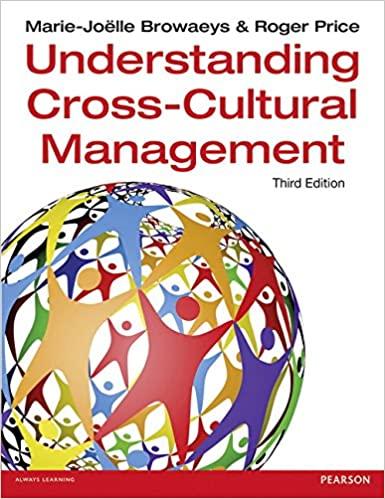A strong brand is reflected in the culture of the organisation, which is itself a reflection of
Question:
A strong brand is reflected in the culture of the organisation, which is itself a reflection of the people working in it. This relationship is the focus of the study below.
The authors of the original study on which the text below is based, examined and compared a number of different brands of one company. To assess the extent to which the brands differ from each other, they developed a model which is an adaptation of the model used in Part One to determine a cultural profile. The model used in their study maintains the layout and some of the values of the Part One model, supplemented with others conceived by the authors. Using this model, the authors drew up a cultural profile for each of the brands in question in line with the authors’ observations and perceptions.
Learning outcomes After completing this activity you should be able to:
● Indicate cultural differences used in the marketing of brands.
● Determine the cultural profile of your choice of brands using an adapted version of the model used in Part One to determine a person’s cultural profile.
YOUR ASSIGNMENT
Read the paper below and answer the questions that follow it.
Brands and their cultures
This paper is based on the Master’s thesis written by Erik Sierkstra and Robert Stal (2005, Nyenrode Business Universiteit). The company and brands used in the original thesis have been fictionalised.
Cherlon, with its headquarters in New York, is an international manufacturer of cosmetic products. It has brand teams in each of its operating companies responsible for the sales and marketing in their specific country. Within Cherlon Germany, it is said that the employees radiate the characteristics of the brand they are currently working with. This paper will consider four brands and their respective teams at the operating company’s Berlin headquarters. The important features of each brand will be discussed and then contrasted.
METHODOLOGY USED
The cultural profile model used by Browaeys and Price ( Part One , Chapter 6 , Figure 6.3 ) will be applied, but in amended form to enable research into brands in general, and the differences between them in particular. The first element added to the model is that of Control : the extent to which head office exercises control over the different brands (flexible/rigid). Two other elements, Appearance and Behaviour (formal/informal), have been added to the profile model to enable the degree of formality in people’s behaviour to be assessed. Two further additions have been made to assess the Fashion sense in the brand (trendy/classical) as well as the Affinity of the brand with the parent company – the extent to which the brand is associated with Cherlon (weak/strong).
Figure 6.3

The three values used in the original cultural profile are adhered to: Time Focus (monochronic/polychronic), Power structure (hierarchy/equality) and Action (doing/being). These values are aspects of a brand’s culture and can be extracted easily from interviews. They are all artefacts, as it were, of a brand culture and the values of one brand can be easily compared with those of another.
To gain insight into each of the brands, interviews were carried out with employees working for one of these brands. All of these employees had worked for other brands, mainly at Cherlon’s head office. The questions asked of each interviewee were focused on how the culture of the brand which the employee was currently busy with differed from other brands he knew or had worked for. Other questions were also asked to determine how the culture of the employee’s brand in the country in question differed from the same brand’s culture in another country’s subsidiary.
THE BRANDS
Four brands were chosen for analysis from Cherlon’s products. They each occupy a unique position in the company’s portfolio and the images they radiate are different to each other’s.
The brands described below were chosen from the:
● Women’s professional products division
● Men’s professional products division
● Luxury products division
● Consumer products division.
To show the difference between these brands, a cultural profile was made of each......
Questions
1. By referring to Figure 6.3 ‘Model of culture’ and Activity 6.2 in Part One , make a similar ‘model for brand cultures’ using the parameters chosen by the authors of this study.
Figure 6.3


2. Re-read the definitions of the topics in Concept 6.1 : Time focus (polychronic/monochronic); Activity (being/doing); and Power (hierarchy/equality). Define in the same way the five new values of the model used by the authors’ paper in making the profile of the brands.

3. Summarise the differences and similarities between the profiles of the four Cherlon brands.
4. Using a similar procedure, make a cultural study of brands in cosmetics or other industries:
a) Choose a real company on the internet that works with several brands.
b) Look at the information available – text as well as images – and choose some of contrasting brands within the company. If possible, talk to people familiar with the brands in question and, if possible, with people working for the brands.
c) Develop a cultural profile for each brand using the models referred to in question 1. If necessary, you may adapt some of the values used in the models.
Step by Step Answer:

Understanding Cross Cultural Management
ISBN: 9781292015897
3rd Edition
Authors: Marie Joelle Browaeys, Roger Price





